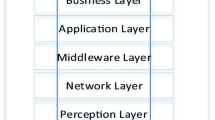Abstract
Internet-of-things (IoTs) deploy massive number of sensors to monitor the system and environment. Anomaly detection on sensor data is an important task for IoT maintenance and operation. In real applications, the occurrence of a system-level incident usually involves hundreds of abnormal sensors, making it impractical for manual verification. The users require an efficient and effective tool to conduct incident analysis and provide critical information such as: (1) identifying the parts that suffered most damages and (2) finding out the ones that cause the incident. Unfortunately, existing methods are inadequate to fulfill these requirements because of the complex sensor relationship and latent anomaly influences in IoTs. To bridge the gap, we design and develop a Temporal Graph based Incident Analysis System (TGIAS) to help users’ diagnosis and reaction on reported anomalies. TGIAS trains a temporal graph to represent the anomaly relationship and computes severity ranking and causality score for each sensor. TGIAS provides the list of top k serious sensors and root-causes as output and illustrates the detailed evidence on a graphical view. The system does not need any incident data for training and delivers high accurate analysis results in online time. TGIAS is equipped with a user-friendly interface, making it an effective tool for a broad range of IoTs.
Access this chapter
Tax calculation will be finalised at checkout
Purchases are for personal use only
Similar content being viewed by others
References
Tang, S., Shelden, D.R., Eastman, C.M., Pishdad-Bozorgi, P., Gao, X.: A review of building information modeling (BIM) and the internet of things (IoT) devices integration: present status and future trends. Autom. Constr. 101, 127–139 (2019)
Li, Z., et al.: Generic and robust localization of multi-dimensional root causes. In: 2019 IEEE 30th International Symposium on Software Reliability Engineering (ISSRE), pp. 47–57 (2019)
Liu, P., et al.: FluxRank: a widely-deployable framework to automatically localizing root cause machines for software service failure mitigation. In: 2019 IEEE 30th International Symposium on Software Reliability Engineering (ISSRE), pp. 35–46 (2019)
Meng, Y., et al.: Localizing failure root causes in a microservice through causality inference. In: 2020 IEEE/ACM 28th International Symposium on Quality of Service (IWQoS), pp. 1–10 (2020)
Ma, M., et al.: Diagnosing root causes of intermittent slow queries in cloud databases. Proc. VLDB Endowment 13(8), 1176–1189 (2020)
Chen, H., Horak, M., Narayanappa, S., Woodward, K.: Integrating AI into planning, diagnostic, and prescription systems for human & robotic deep space exploration missions. In: AAAI 2018 Fall Symposium Series (2018)
Yuan, P., Tang, L.A., Chen, H., Sato, M., Woodward, K.: 3D histogram based anomaly detection for categorical sensor data in internet of things. Open J. Internet Things (OJIOT) 8(1), 32–43 (2022)
Yuan, P., Tang, L.A., Chen, H., Sato, M., Woodward, K.: Explainable anomaly detection system for categorical sensor data in internet of things. In: Amini, M.R., Canu, S., Fischer, A., Guns, T., Kralj Novak, P., Tsoumakas, G. (eds.) Machine Learning and Knowledge Discovery in Databases. ECML PKDD 2022. LNCS (LNAI), vol. 13718, pp. 594–598. Springer, Cham (2023). https://doi.org/10.1007/978-3-031-26422-1_37
Behniafar, M., Nowroozi, A., Shahriari, H.A.: A survey of anomaly detection approaches in internet of things. ISC Int. J. Inf. Secur. 10(2), 79–92 (2018)
Author information
Authors and Affiliations
Corresponding author
Editor information
Editors and Affiliations
Rights and permissions
Copyright information
© 2023 The Author(s), under exclusive license to Springer Nature Switzerland AG
About this paper
Cite this paper
Yuan, P., Tang, LA., Chen, H., Chang, D.S., Sato, M., Woodward, K. (2023). Temporal Graph Based Incident Analysis System for Internet of Things. In: De Francisci Morales, G., Perlich, C., Ruchansky, N., Kourtellis, N., Baralis, E., Bonchi, F. (eds) Machine Learning and Knowledge Discovery in Databases: Applied Data Science and Demo Track. ECML PKDD 2023. Lecture Notes in Computer Science(), vol 14175. Springer, Cham. https://doi.org/10.1007/978-3-031-43430-3_20
Download citation
DOI: https://doi.org/10.1007/978-3-031-43430-3_20
Published:
Publisher Name: Springer, Cham
Print ISBN: 978-3-031-43429-7
Online ISBN: 978-3-031-43430-3
eBook Packages: Computer ScienceComputer Science (R0)





